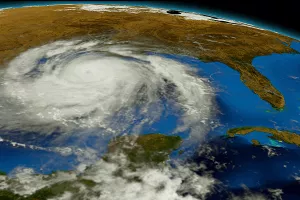Hurricane season is here again. While the National Oceanic and Atmospheric Administration (NOAA) predicted back in May that we may not see the historic level of storm activity that was present in 2020, things aren't playing out as expected—so far. Weather.com recently noted that the 2021 Atlantic hurricane season is already at a faster pace than 2020. And it started earlier, with Elsa, on record as the earliest fifth named storm in any hurricane season. As for fire season, as of this writing, 80 large wildfires have burned over 1 million acres in thirteen states, and fires in California have already burned three times more land than in the same period compared to last year's record.

Business Continuity Starts with Backups
Ensuring business continuity starts by protecting your data from being damaged or destroyed. That means making sure your critical files, systems, and databases are always backed up. Arcserve and StorageCraft, an Arcserve company, recommend that you follow our update to the typical 3-2-1 backup rule by going with a 3-2-1-1 backup strategy. Put simply, store at least three copies of your data in two types of media, with at least one copy offsite in the cloud or secure storage and at least one copy in immutable storage. With this approach, you can be confident that your data is protected and can be restored even if a widespread disaster strikes.
Minimize Impacts with Disaster Recovery Solutions
We've already noted that downtime is expensive. You can estimate your downtime costs using a simple framework we've outlined in a recent post. And building out your own data center for disaster recovery is expensive, too. But one thing is sure, when your business is brought to a halt, every minute counts. That's why it's worth considering cloud-based disaster recovery as a service (DRaaS). Solutions like StorageCraft Cloud Services help you control DRaaS costs by letting you customize disaster recovery services to fit your business needs and budget. And costs are predictable, with no surprise extra fees at the time of recovery. So come hurricanes or fires, you're data is safe, secure—and available.
Protect Small Business, Remote Office, and Branch Office Data
Smaller businesses and companies with remote and branch offices (ROBO) need to protect their data from natural disasters, too. For these simpler environments, it's worth considering StorageCraft OneXafe Solo, a plug-and-play backup appliance that provides direct-to-cloud data protection. OneXafe Solo streams data directly to StorageCraft Cloud Services for business continuity. It also uses StorageCraft OneSystem for cloud-based management from anywhere, anytime, using any web browser, and is extremely easy to deploy—plug it in, connect to the internet, and start protecting data in minutes. OneXafe Solo also offers cost-effective, enterprise-class features, including the ability to quickly boot backup images as virtual machines (VMs) using patented VirtualBoot technology and recover files and folders in seconds and entire systems in minutes. That keeps downtime to a minimum. And data protection for virtual systems is both host-based and agent-based, complete with physical and virtual system recovery for maximized business continuity.
Stand Up to Mother Nature
There's no time to waste in addressing business continuity in the face of natural disasters. Doing nothing isn't an option unless you're willing to suffer the potentially devasting impacts that come with losing your data. That's why it's worth your while to take a few minutes to talk to a StorageCraft business continuity expert. We hope you'll agree that it is time well spent.
You May Also Like
- Backup and Disaster Recovery Data Resilience
Introducing Arcserve 10000 Series Appliances: Rapid Deployment. Enhanced Security. Simplified Compliance.
December 10th, 2024 - Backup and Disaster Recovery Business Continuity Cloud Compliance Cybersecurity Data Protection Data Resilience Data Storage Ransomware
The Importance of Versatile Cloud Data Protection Support in a Multicloud World
December 3rd, 2024 - Backup and Disaster Recovery Business Continuity Cybersecurity
Tech Conversations - Beyond the Arc: Cyber Confidence for Business Leaders
December 2nd, 2024